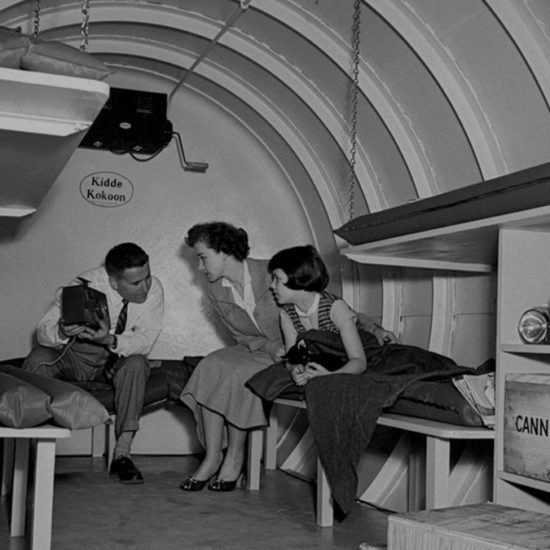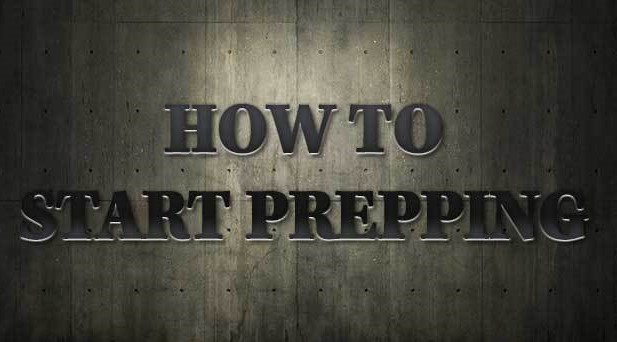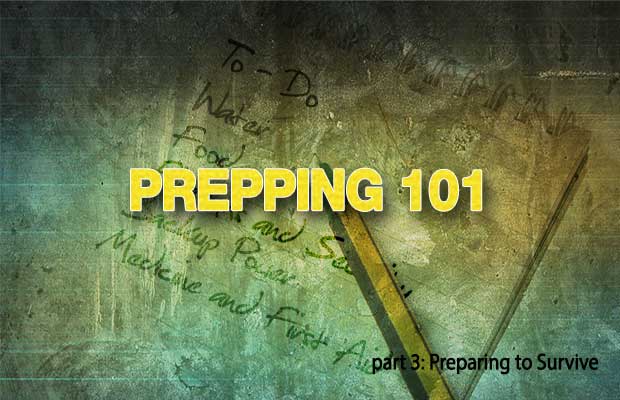
There are numerous concepts used in the Prepping community and the concept of a Get Home Bag is one of the easiest to understand because the rationale is very obvious and could potentially affect most anyone. The practice of assembling and using this tool is another matter. A Get Home Bag (GHB) is just what it sounds like. It is a bag that contains supplies to help you Get Back Home. Pretty simple, right?
The next obvious question is what do you put in the Get Home Bag? This is when the answer becomes more complex. Not because it is hard, because I do not believe constructing a bag with the basic supplies you need is difficult, but we frequently want a list of items we can go purchase because its easier. Actually, it would be better if we could go down to Wal-Mart purchase our get home bag along with the latest DVD and some chips and be done with it. Either give me simple instructions or make it easy for me to acquire it and I’m there.
The Get Home Bag is often grouped in with its larger sibling, the Bug-Out-Bag or bugout bag, but the two are vastly different tools and should have two distinctly different uses. While the bugout (BOB) usually contains the same items from situation to situation, this doesn’t necessarily make sense in a get home bag. Let me explain why.
The scenario for a bugout bag is that you are forced to evacuate your home and you are heading somewhere else for an extended period of time. You may or may not be coming back. Your bug out bag carries the basic necessities for living away from your home for an extended time. The bug out bag is usually pretty closely aligned to your Survival Kit List and the bags are larger because you have more stuff that needs to go in there. Most people would share the same necessities (food, clothing, shelter, security) so the general contents of the bag would be similar regardless of location. You would need some type of shelter, but the type of protection from the elements you need may be different for someone living in Alaska as opposed to Mississippi.
The Get Home Bag is not something you should be packing to live off of. This bag’s contents depend largely on how long it will take you to get back to your family and the obstacles you envision facing on your journey. If you are traveling away from home, your GHB should take a completely separate state of scenarios into consideration and it should be packed accordingly. If you are right down the street at a party, would you need the same equipment?
How far will you have to travel?
According to data I was able to get from the US Census Bureau website, the average commute time in the US was about 25 minutes. I know this is an average and some of you out there drive an hour each way. Uphill. In a car made of cardboard… Actually, I used to do that myself for a month. There will always be situations that are on the outside edges and I can’t take all of them into consideration so we will just take the average as our baseline and work out from there. So taking that amount of 25 minutes into consideration we can assume if you jump into your car and start driving at 60 miles an hour right away the average distance would be 25 miles. I know this isn’t the case, so I am knocking this in half for traffic, public transportation, etc. 12 miles away from home for the average person.
OK, now that we have our base distance of approximately 12 miles and knowing that all things being equal, the average person (I am going to use that term a lot) can comfortably walk a mile in 20 minutes. 12 miles X 20 minutes is about 4 hours. If you are being chased by Zombies, that amount of time goes down and you could make it home much quicker, but the average person should only need about 4 hours to get back home. But wait you say, this is a grid-down type of scenario and you don’t know what could be involved with actually trying to get back home. What if I am not at work and I am visiting relatives? That’s correct so we will take another set of assumptions.
What could cause me to need my Get Home Bag?
For the purposes of this article, some emergency has happened, your normal method of transportation is not available and the location you are in (maybe it is a visit to friends) isn’t going to work so you must get back home. We’ll take that one step further and say in order to realistically need your GHB, NO method of transportation is available and you are using your LPC’s to transport you back to home. For those of you who don’t know, LPC stands for Leather Personnel Carriers – shoes. If we had a situation like 9/11 where a catastrophe happened, no public transportation was available but the basic infrastructure was in place, walking is perfectly reasonable. Again, this is your average person, not someone who is in a wheelchair or injured. If this is the case, what needs to be in your GHB? That depends on what you think you will need for your 4 hour (or so) walk home. Do you need a complete first aid kit, cutting torch, welding gloves and hazmat suit? Probably not.
Let me pause right here and say that I am not poopooing the idea of a Get Home Bag. I have one and it is with me daily in my car. I am just trying to put things into perspective. If you work 3 hours away or are on vacation, your bag’s contents need to be adjusted.
OK, back to the scenario where a disaster has happened, no public transportation is available and you are forced to walk back home. There are a ton of factors that could influence what you carry.
- Is it Summer or Winter?
- Is there snow and ice on the ground?
- Do you work in a high-rise office and wear high-heels to work?
- Are you a lifeguard and only wear a bathing suit?
- Is it evening time when you are forced to get back home?
- Are you likely to be in a situation where you are trapped inside a building and need to escape?
- Could you possibly be trapped underground in a tunnel?
All of these factors start to influence what we pack but they should individually be evaluated against the percentage of likelihood that you would encounter a situation like this. Could you possibly be in a car that is plunged into an icy river and you would need oxygen tanks to survive until you can swim up to the surface? Sure, but is that very likely? Nope.
OK, I think I have circled the wagons long enough here and if you have been like me and scrolled all of the way to the bottom until you see a list of bullets, here you go. I keep all of my stuff for my get home bag in a Maxpedition Jumbo Versipack because it has more than enough room for what I need to carry.
- Walking shoes – these may already be on your feet.
- ball cap or boonie hat to keep the elements off your head
- Jacket – to knock the chill or rain off depending on season
- Gloves – work type gloves would be better in this scenario
- Knife (but this should already be in your EDC)
- Multi-tool (again, you should already have this on you)
- Headlamp with spare batteries
- Dust mask or handkerchief
- Water – amount depends on your situation
- Basic blood stopper bandage
- Spare ammo (you are carrying right?)
- meal replacement bar X 2
- energy booster – 5 hour energy
- Lighter
- Pen/paper
- 25 feet of paracord
- 10 feet of duct tape (I prefer Gorilla tape)
Your mileage may vary.
Do you need this many medical supplies to just make it home? Probably not. This is a good emergency medical kit for your family though.
Is this going to be enough for you to chisel your way out of a collapsed parking garage, fight the mutant hordes, set up a shelter to weather the meteor storm and feed a group of individuals you have met up with after the disaster for a week? No, but this will get the average person home in a day or two without dying in most situations.
Can you add more water and food? Of course and if you live in hotter climates or have further to go, you should absolutely do that. For me in my every day use though I don’t believe this is necessary. I have reviewed other Prepper’s bags and they account for a lot of situations mine doesn’t. For example, I have seen some that suggest rope (to rappel out of your office window) and bolt cutters and topographical maps and compasses and pry bars and lock pick sets. My belief is that if you can’t figure out how to make it back home without a map, you are very likely to not know how to use a map in the first place. Perhaps you want to take this so someone else can tell you how to get home?
What about a more substantial first aid kit? That’s a great question, but what are you planning for? Most every first aid kit I have seen comes with 250 Band-Aids and a lot of aspirin tablets for the most part. If the world around you has collapsed so completely that you are forced to walk home 12 miles are you really going to stop and put a band aid on a boo boo? No, but you may be injured more seriously so I recommend a basic bandage to stop larger blood loss and patch a bigger cut.
What if you are vacationing and are several hundred miles away from home? That would require you to change the contents of your get home bag. For instance my normal EDC firearm is replaced with a full size Glock and two spare magazines. My water is increased and so are my food preparations. I also have clothing appropriate for walking in whatever weather is forecast. If I am traveling with others, the get home bag starts to look more like a bug out bag but that’s fine.
What about the roving hordes of mutant zombie bikers? Again, if the world has gone to crap like that, carrying more stuff isn’t necessarily going to help you. Your mileage may vary, but this is the basic list of items that can keep you from starving, dehydrating and safe for a day. You may be tired and hungry, but you aren’t going to die.
I am curious to hear what others have packed in their get home bags.
Other self-sufficiency and preparedness solutions recommended for you:
Healthy Soil + Healthy Plants = Healthy You
The vital self-sufficiency lessons our great grand-fathers left us
Knowledge to survive any medical crisis situation
Liberal’s hidden agenda: more than just your guns
Build yourself the only unlimited water source you’ll ever need
4 Important Forgotten Skills used by our Ancestors that can help you in any crisis





















